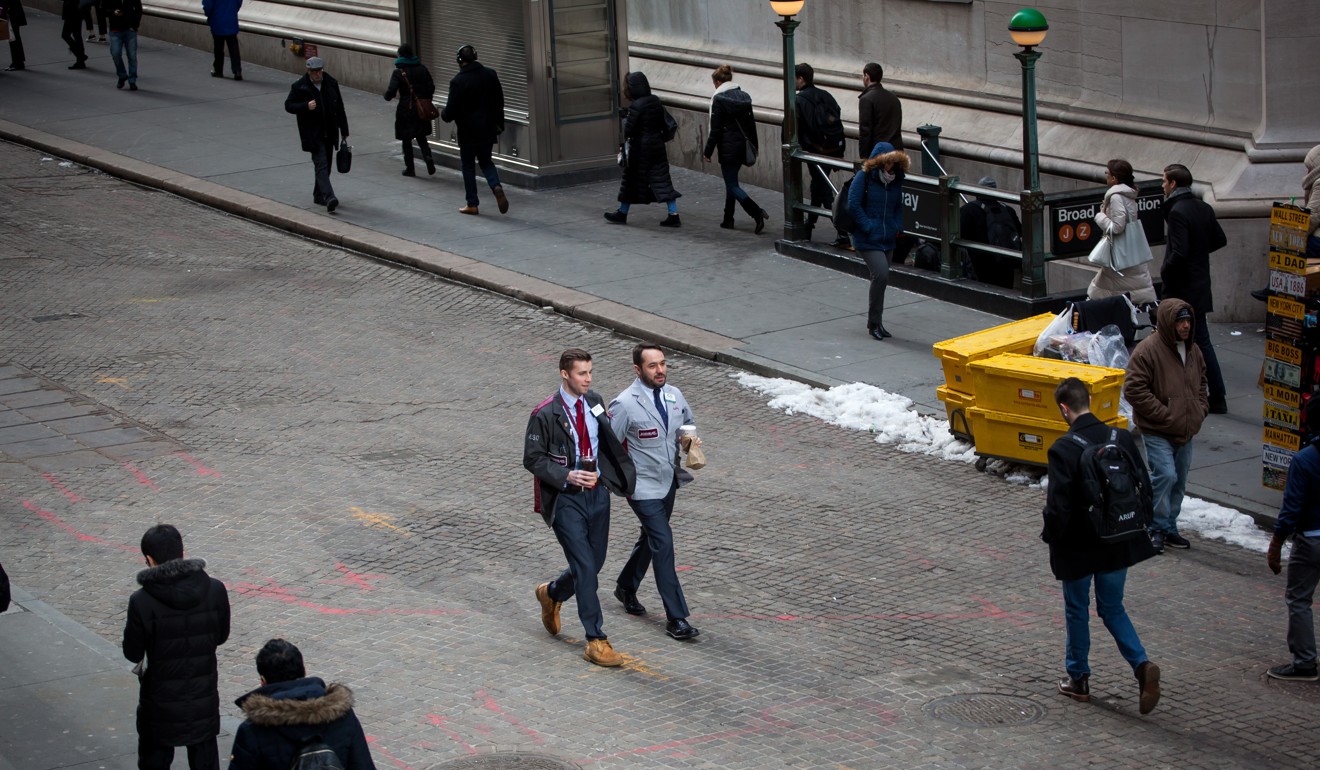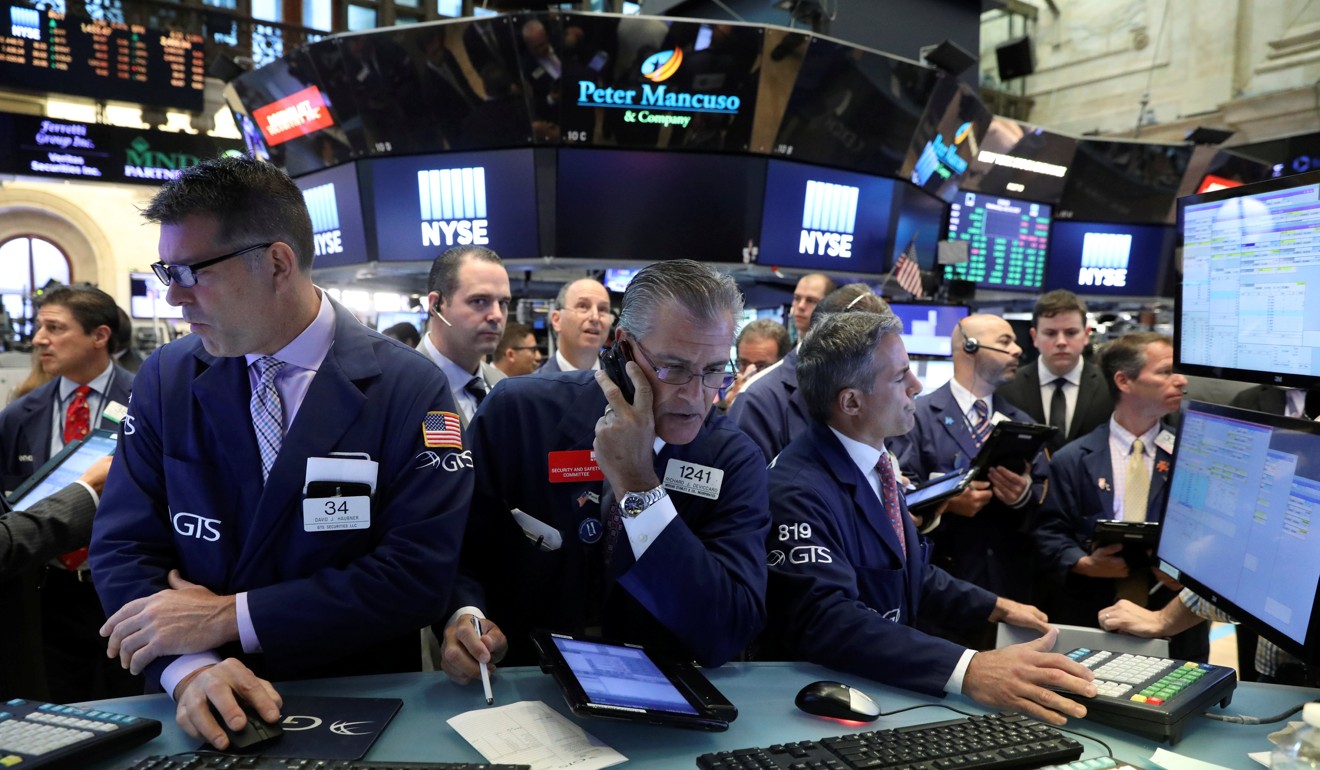
The ridiculous size of the ‘average’ Wall Street bonus in 2017? Three times what most US households made all year
Wall Street bonuses are climbing toward record highs again, according to government data released Monday showing that in 2017, the average bonus payout reached US$184,220.
That is an 17 per cent increase compared to the previous year and the closest Wall Street has come in more than a decade to its all-time high of US$191,360, according to the New York State Comptroller. That follows an 15 per cent increase in 2016, when the average bonus was about $157,660.
The median US household income in 2016, the most recent available figure, was US$59,039, the Census Bureau said.

The government figures also continue to reflect how much more Wall Street executives earn compared to the rest of the private sector. Including bonuses, the average Wall Street salary was US$375,200 in 2016, the most recent year available, five times higher than in the rest of the private sector, with an average of US$74,800, according to the Comptroller’s office. In New York City, about 25 per cent of the industry’s employees took home more than US$250,000, compared with 2 per cent in the rest of the city’s workforce, the report said.
“The large increase in profitability over the past two years demonstrates that the industry can prosper with the regulations and consumer protections adopted after the financial crisis,” Thomas DiNapoli, the N.Y. Comptroller.

This comes at a time when efforts to rein in Wall Street pay are beginning to ease. In the 2010 financial reform package, known as the Dodd-Frank Act, lawmakers called for regulators to curb compensation that was considered excessive or pay that exposed a company to significant financial losses. But progress on the rules has been slow and is not expected to be a priority under the Trump administration.
“The massive size of the Wall Street bonuses is disturbing not just because of how it contributes to economic inequality in this country,” said Sarah Anderson, the global economy project director at the Institute for Policy Studies. “It’s also a sign that the reckless Wall Street bonus culture, which contributed to the 2008 financial crisis, continues to flourish.”
The growing size of the bonuses is also contributing to a gender pay gap, industry and compensation experts say. The massive pool of Wall Street bonus money is distributed among the highest-ranking and earning industry executives and employees. But women make up a small proportion of those employees.
Earlier this month, for example, Goldman Sachs said that in Britain its female employees receive an average hourly wage that is 56 per cent lower than that of their male counterparts. The disparity is worse when factoring in the bank’s discretionary bonuses – the lifeblood of many large investment banks. The average bonus for a woman is 72 per cent lower than it is for a man, the bank said, which covers more than 6,000 employees. New York-based Goldman Sachs blamed the pay gap on the lack of women in its highest-paying, senior positions. Currently, women make up 17 per cent of the top quartile of the bank’s highest-paid workers in Britain, the bank said.

